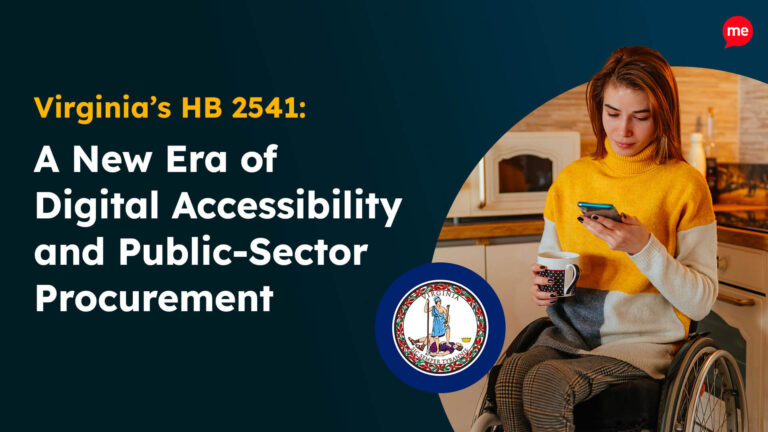Get A Free Accessibility Check Of Your Website
Run Check NowAccessibility isn’t just a nice-to-have, it’s an essential part of creating inclusive experiences for everyone. As websites, apps, and digital services continue to evolve, organizations are under more pressure than ever to ensure that their online presence meets accessibility expectations.
Yet with so many different standards, laws, and technical guidelines out there, it’s easy to get confused. Two very important, but often misunderstood, are the Web Content Accessibility Guidelines (WCAG) and the Accessibility for Ontario’s with Disabilities Act (AODA).
While both play critical roles in shaping a more accessible internet, they serve very different purposes. In this guide, we’ll unpack what each standard is, how they connect, where they differ, and what you need to know to stay compliant.
What is WCAG?
The Web Content Accessibility Guidelines (WCAG) are a set of recommendations designed to make websites and digital content easier for people with disabilities to use. Created by the World Wide Web Consortium (W3C), WCAG provides clear instructions on how to design websites that everyone can access, including people who are blind, deaf, or have physical or cognitive challenges.
The guidelines are based on four main principles that work together so web content is easy to see, navigate, understand, and work well across different devices. While WCAG itself isn’t a law, many governments around the world have made it part of their legal requirements for web accessibility.
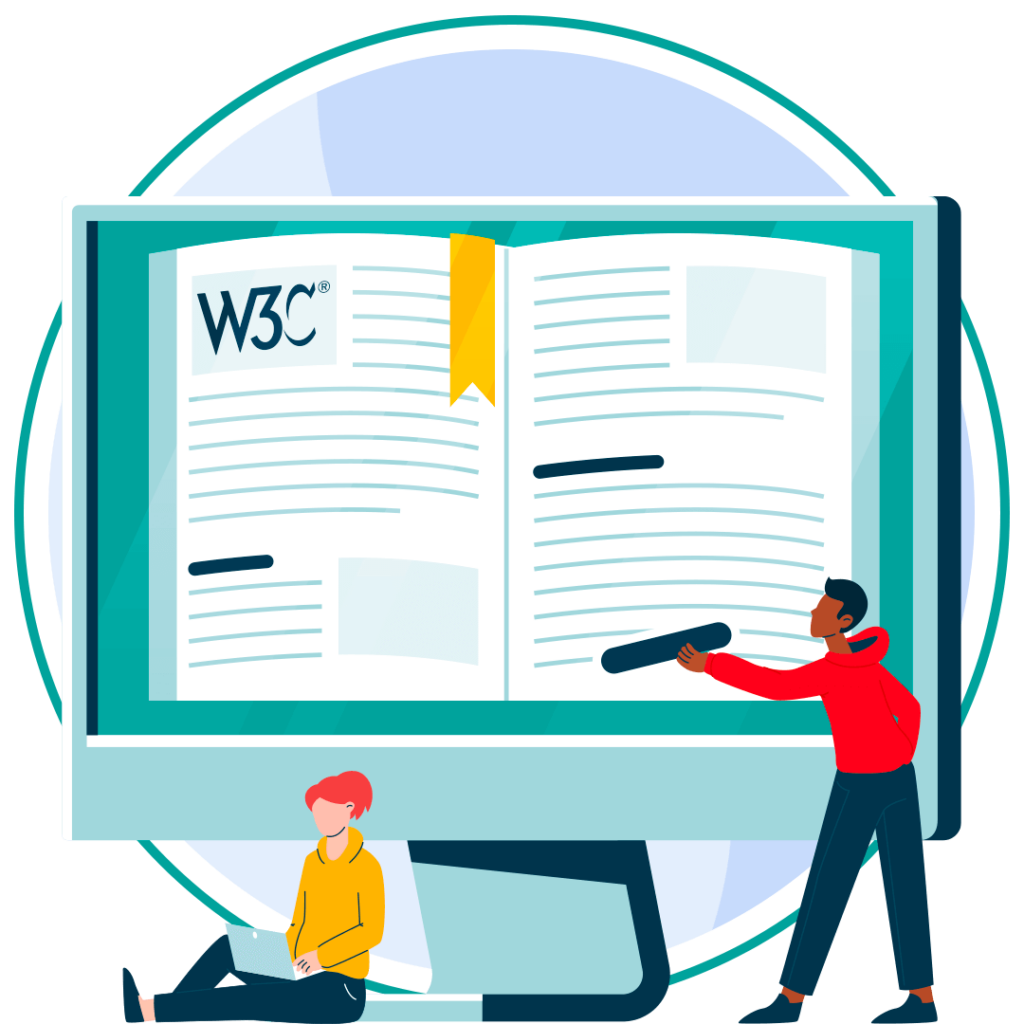
To stay up-to-date with tech advances, WCAG publishes regular updates to its guidelines as technology continues to advance. The newest version standard is currently WCAG 2.2.
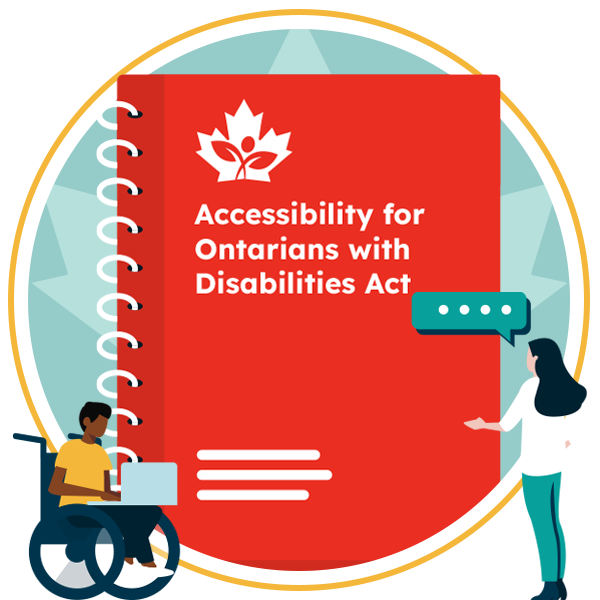
What is AODA?
The Accessibility for Ontarians with Disabilities Act (AODA) is a law passed by the Ontario government in 2005, aimed at making the province fully accessible to people with disabilities by 2025. It sets out standards that organizations must follow across five key areas: customer service, employment, information and communications, transportation, and the design of public spaces. AODA requires businesses, nonprofits, and public sector organizations to identify, remove, and prevent barriers for people with disabilities.
For digital accessibility, AODA mandates compliance with the WCAG 2.0 Level AA guidelines for websites and web content. Non-compliance can result in sizable fines and reputational risk for organizations.
Get a free automated AODA and WCAG compliance audit of your website. This audit will highlight compliance violations and provide the recommendations needed to meet AODA and WCAG compliance standards.

AODA vs. WCAG: A comparative summary
There are a few key features of both the WCAG and AODA. Here is a summary of how they work for each:
| Feature | AODA | WCAG |
| Definition | A legal accessibility standard in Ontario, Canada. | A set of international web accessibility guidelines. |
| Scope | Applies to organizations operating in Ontario. | Global applicability, used as a best practice worldwide. |
| Legal status | Legally enforceable with penalties for non-compliance. | Not legally binding but often referenced in laws worldwide. |
| Compliance requirements | Requires organizations to follow WCAG 2.0 Level AA. | Provides guidelines (WCAG 2.0, 2.1, 2.2) but no enforcement. |
| Enforcement & penalties | Fines up to $100,000 per day for non-compliance. | No direct penalties; used as a reference in accessibility laws. |
| Primary goal | To make Ontario fully accessible by 2025. | To provide a universal standard for web accessibility. |
Exploring the differences between AODA and WCAG
Let’s discuss the key differences between WCAG and AODA: legal status, scope, applicability, compliance measures, and enforcement.

AODA vs. WCAG: Definition
The Accessibility for Ontarians with Disabilities Act (AODA) is a provincial law enacted in Ontario, Canada, in 2005 to set mandatory accessibility standards for organizations, covering both physical and digital environments. It aims to break down barriers for people with disabilities across society.
The Web Content Accessibility Guidelines (WCAG), meanwhile, are a set of technical standards created by the World Wide Web Consortium (W3C) that outline how to make web content accessible to users with a range of disabilities. Unlike AODA, WCAG is not a law but a framework that governments and organizations can adopt to achieve digital accessibility.
AODA vs. WCAG: Scope
AODA’s scope is wide-ranging. It covers both physical and digital spaces within the areas of customer service, employment, information and communications, transportation, and public spaces. WCAG is narrower in focus, applying solely to digital content such as websites, mobile apps, PDFs, and other online resources.
AODA vs. WCAG: Legal status
AODA is a provincial law in Ontario, making its standards legally binding for organizations operating within the province. WCAG itself is not a law but a set of voluntary international guidelines. However, governments and legal frameworks, including AODA, often adopt WCAG as the technical benchmark for compliance.

AODA vs. WCAG: Compliance requirements
Under AODA, organizations must meet specific accessibility requirements depending on their size and sector, including making websites and web content conform to WCAG 2.0 Level AA standards. WCAG, by itself, does not impose compliance requirements. It simply provides the standards that organizations are required to meet when referenced by laws like AODA.
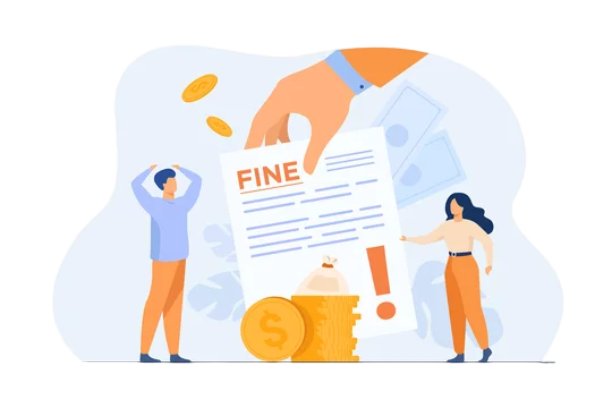
AODA vs. WCAG: Enforcement & penalties
AODA punishes non-compliance such as audits, inspections, and financial penalties with fines that can reach up to $100,000 per day. WCAG has no built-in enforcement or penalties, and consequences only arise if WCAG compliance is mandated through laws like AODA, the American ADA, or similar regulations.
AODA vs. WCAG: Primary goal
The primary goal of AODA is to eliminate accessibility barriers across Ontario and achieve full accessibility by 2025, improving quality of life for people with disabilities. WCAG’s main objective is to provide a technical framework that enables web and digital content creators worldwide to make their content more accessible, following four core principles: perceivable, operable, understandable, and robust.
How AODA incorporates elements of WCAG
AODA directly incorporates elements of WCAG by requiring organizations to make their websites and digital content comply with WCAG 2.0 Level AA standards. Under the AODA’s Information and Communications Standards, businesses, nonprofits, and public sector organizations must ensure that their new or significantly updated websites are accessible according to WCAG 2.0.
This means following specific technical guidelines covering text alternatives for images, keyboard accessibility, readable content, adaptable layouts, and more. Although WCAG itself is a voluntary global standard, AODA gives it legal force in Ontario by making it the mandatory benchmark for digital accessibility compliance.
Practical steps for achieving compliance with AODA and WCAG
When it comes to AODA and WCAG compliance there are a few steps that every organization should take. This can include automated accessibility testing, implementing accessibility fixes, training staff on best practices, and more. Let’s take a closer look:
Conduct an accessibility audit
You can’t become compliant before first understanding where you currently stand. That’s why it is essential to test your website for AODA compliance using an automated accessibility audit. These audits evaluate your website against WCAG standards to identify barriers that could prevent users with disabilities from accessing your content.
These days there are online tools like the Recite Me WCAG website accessibility checker to help you conduct audits quickly and easily. A thorough audit will highlight both obvious and hidden accessibility issues, giving you a clear action plan.

Implement WCAG guidelines in web design and development
Ideally accessibility should be built into the design and development process from the start, not added later as an afterthought. To achieve this, developers and designers must apply WCAG best practices (such as ensuring sufficient color contrast, creating keyboard-only accessible interfaces, and structuring content for screen readers) throughout every project. This not only helps achieve AODA compliance but also improves usability for all users.
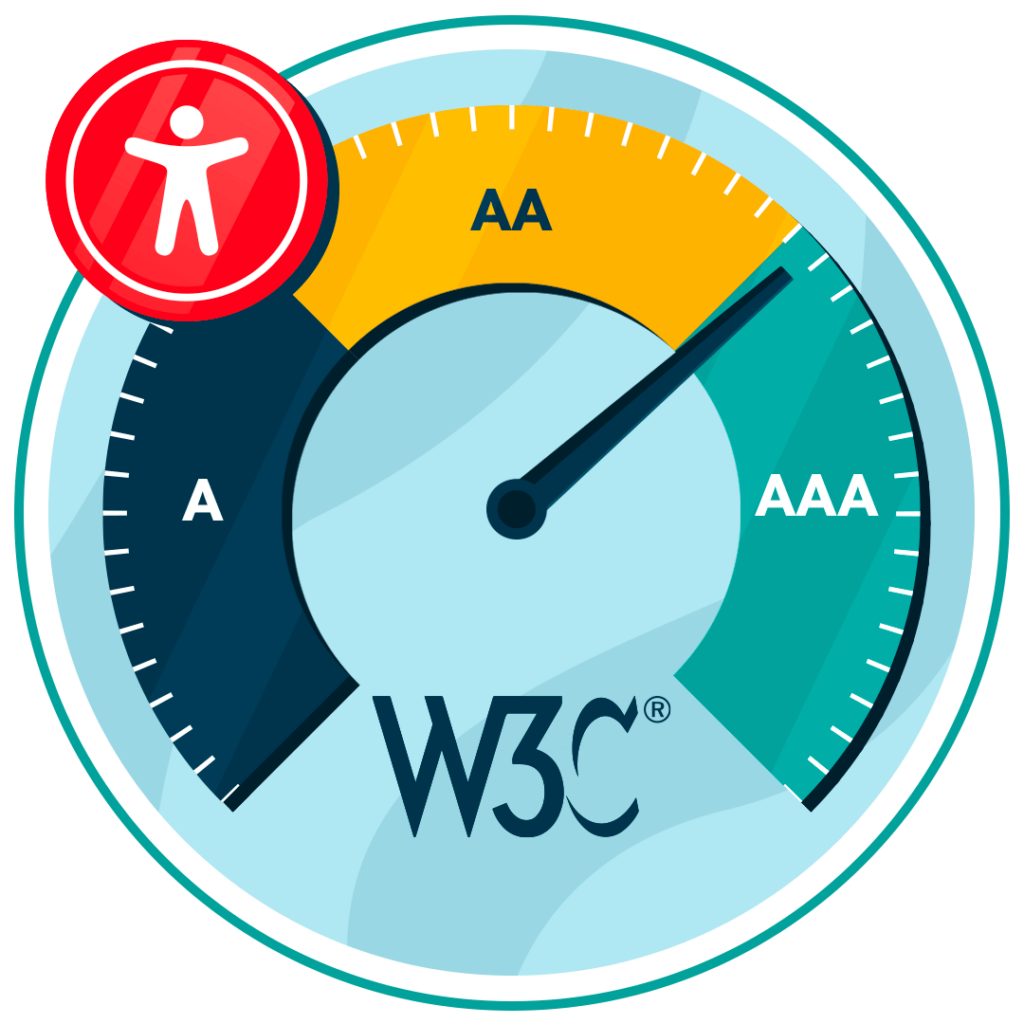
Keeping up with evolving accessibility standards
Accessibility standards and technologies are constantly evolving. For instance, while AODA currently requires WCAG 2.0 compliance, the newest version, WCAG 2.2, includes important updates addressing mobile accessibility and cognitive disabilities. And WCAG 3.0 is expected to be published in the next few years. Staying informed about updates to WCAG, changes to AODA regulations, and emerging best practices ensures your website remains inclusive over time.
Training staff on accessibility best practices
Accessibility compliance isn’t a one-time project; it’s an ongoing organizational commitment. Regularly accessibility training your teams (including designers, developers, content creators, and customer service staff) will ensure your business applies accessibility best practices consistently over time. Training like this free AODA compliance course will equip you with an understanding of the laws as well as how to put accessibility into action.
Our 40-page Digital Accessibility & Inclusion Toolkit helps businesses break down online barriers and make a real impact. It offers practical advice on all aspects of digital accessibility, from writing an accessibility statement to accessible website tips and inclusive hiring.
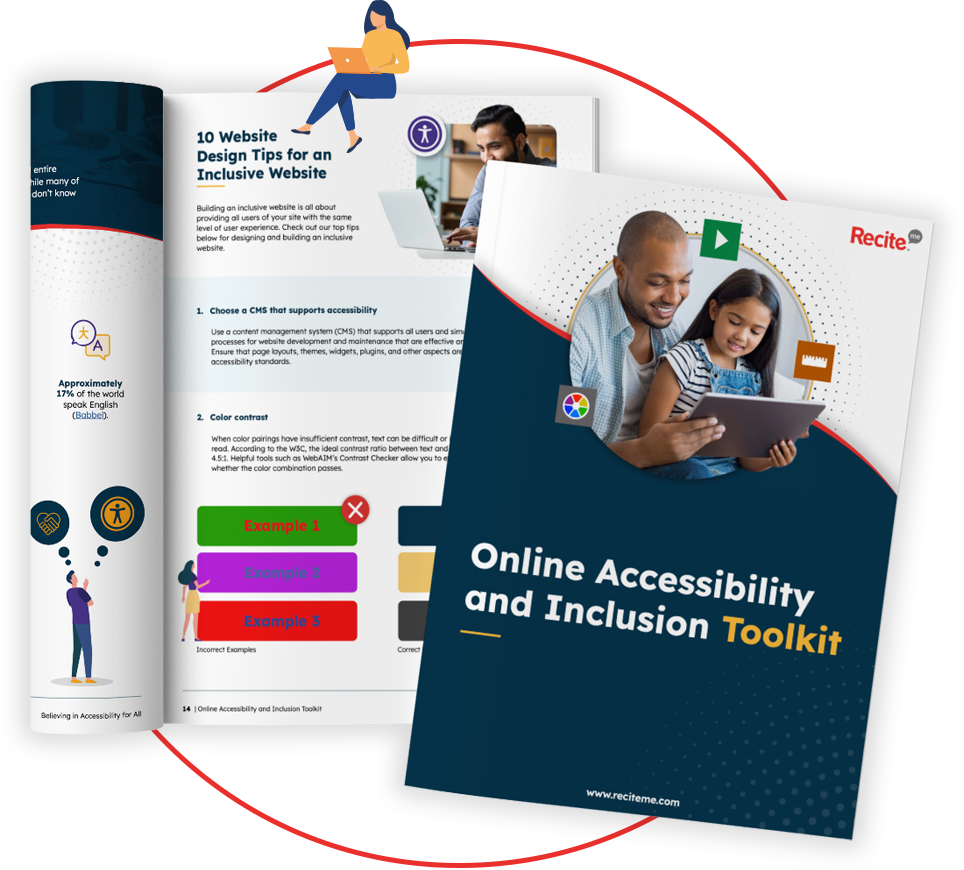
Final thoughts: How WCAG and AODA can support compliance and promote inclusivity together
When it comes to digital accessibility, both WCAG and AODA are important, and together they create a strong foundation for real, lasting inclusivity. AODA gives you the legal framework you need to meet accessibility standards in Ontario, while WCAG provides the technical guidance to help you build websites and digital content that everyone can use.
By following both AODA and WCAG, you’re not just checking a box for compliance, you’re creating digital spaces that are more welcoming, easier to navigate, and better for all users, including people with disabilities. Making accessibility part of how you do business helps you stay ahead of changing laws and expectations, and it shows your commitment to building a truly inclusive organization.
WCAG Vs AODA FAQs
Looking for a recap or quick summary? Here are a few of our most frequently asked questions to help you get to grips with the essentials:
What is the difference between WCAG and AODA?
AODA (Accessibility for Ontarians with Disabilities Act) is a provincial law in Ontario, Canada, that mandates accessibility standards across various sectors, including digital spaces. WCAG (Web Content Accessibility Guidelines) is a global set of technical standards for making digital content accessible to people with disabilities. While AODA requires compliance with WCAG for websites and digital content in Ontario, WCAG itself is not a law.
Does AODA require compliance with WCAG?
Yes. AODA mandates that businesses and public sector organizations in Ontario must comply with WCAG 2.0 Level AA standards for websites and digital content as part of the Information and Communications Standard.
What happens if my organization does not comply with AODA or WCAG?
For AODA, non-compliance can result in the government imposing financial penalties and potential legal consequences for failure to follow accessibility standards. While WCAG does not have penalties by itself, failure to meet WCAG can result in non-compliance with laws like AODA.
Does WCAG apply outside of Ontario?
Yes. WCAG is a global standard and is referenced in accessibility laws around the world, including in the United States (ADA), the European Union, and many other regions. While WCAG itself is not a law, it serves as the foundational framework for web accessibility compliance globally.
Is WCAG 2.0, 2.1 or 2.2 required for AODA compliance?
AODA currently requires compliance with WCAG 2.0 Level AA. But while WCAG 2.0 is the minimum standard, organizations are encouraged to follow the newest guidelines, WCAG 2.2 to further enhance accessibility. These new guidelines have improved standards for mobile devices and people with cognitive or learning disabilities.
Can AODA and WCAG help my organization beyond legal compliance?
Absolutely. Beyond simply meeting legal requirements, following AODA and WCAG principles can significantly improve the user experience for all users, not just those with disabilities. Accessible websites are easier to navigate, have better performance across devices, and demonstrate your commitment to inclusivity, which can positively impact your reputation.

